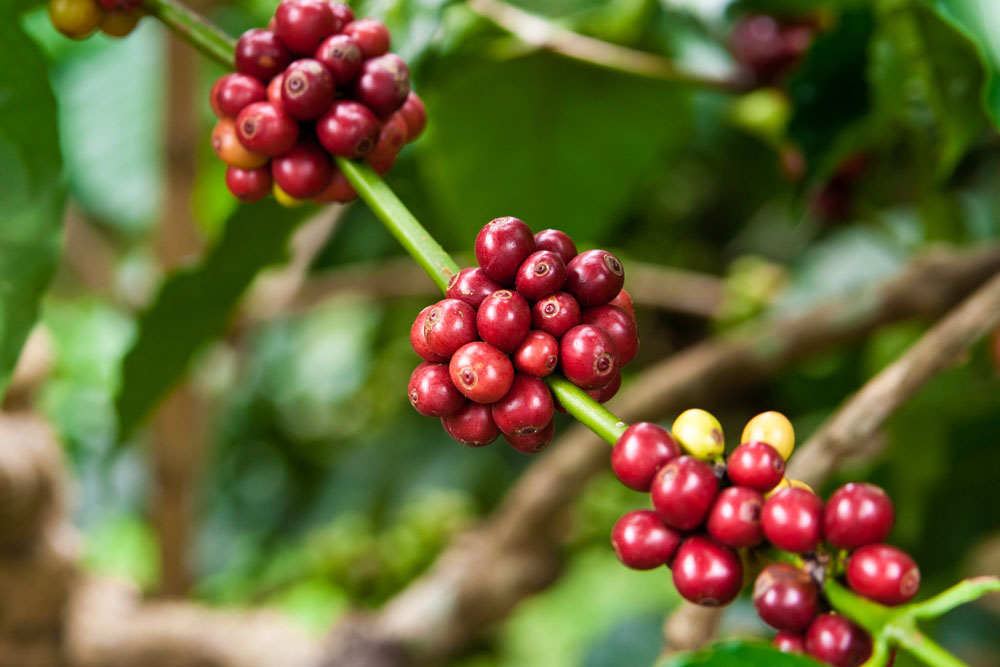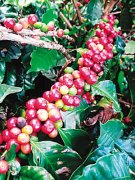Introduction to three kinds of Coffee beans
The Lion King of Sidamogu, Ethiopia washed G1 (Ethiopia Sidamo G1 LionKing)
Origin: Guji,Sidamo,Ethiopia
Bean seed: Heirloom
Processing plant: Shilicho Cooperative
Altitude: 1800-2000m
Handling method: Washed
Picking and processing time: 06Compact 2014
Baking degree: Light
The scent of honey, citrus and coffee flowers
It is produced by Xilisha Cooperative near Dilla town. The cooperative was founded in 1976 and is now a member of the SCFCU of the Sidamo Farmers' Cooperative Union. We have screened the coffee again, and the selected batch has excellent flavor, which tends to be honey, citrus and coffee flowers.
The coffee flavor of Sidamo is very diverse, with different soil types, microclimate and countless native coffee species, which make the coffee produced in cities and towns have obvious differences and characteristics. In 2010-2012, it continuously obtained the high score of CR92~94, the authoritative coffee evaluation website in the United States. Thus it can be seen that the raw beans in this area are extraordinary. The territory has towering mountains, highlands, plateaus, valleys and plains, with diverse topography. The geology of the area belongs to fertile, well-drained volcanic soil with a depth of nearly two meters and a dark brown or brown surface soil. The biggest advantage of the area is that the soil fertility is maintained through the circulation of organic matter, using the withered leaves of the surrounding trees or the residual roots of the plants as fertilizer.
Panamanian Boquette Butterfly (Panama Boquete Butterfly)
Origin: Boquete,Panama
Bean species: 40%Geisha, Catuai, Caturra
Processing plant: Hacienda La Esmeralda
Altitude: 1600m
Handling method: Washed
Picking and processing time: 02Compact 2014
Baking degree: Light-Medium
Tea, taffy
The coffee used by the butterfly comes from the Baru volcano region of the Boqui specialty region of Panama. Up to 1600 meters above sea level, the special microclimate leads to abundant rainfall and great temperature difference between day and night in this area, coupled with fertile volcanic soil, as well as meticulous planning and management of the harvest period, so that the coffee here is excellent in terms of richness, acidity and flower fragrance.
What is special about this coffee is that the raw beans we get are made from a mixture of different varieties, including the famous Rose Summer. More than 40% of the rosy summer is used, which gives this coffee a rosy summer flavor.
After communication with raw bean merchants, they learned that due to the history of the manor, in order to pursue mass production, the early rose summer varieties were mixed with other varieties, so in order to facilitate picking, farmers usually mix the special flavor of rose with other Kaddura and Kaduai varieties. After that, due to the fame and high price of the rose summer variety, all kinds of processing plants began to operate more finely.
Costa Rican Goddess Manor Geisha / Rosa Coffee (Costa Rica Dota El DiosaGeisha)
Origin: Dota,Tarrazu,Costa Rica
Bean seed: Geisha
Processing plant: El Diosa
Altitude: 1850m
Handling method: Washed
Picking and processing time: 04Compact 2014
Baking degree: Light
Green apple fragrance, sugarcane sweet
Located in the Dota region of Costa Rica's best-known tarrazu region, the Goddess Manor is famous for producing micro-batch sub-geisha / Rosa varieties.
In 1865, the Dota region enjoyed the reputation of good Costa Rican coffee, because the highway construction extending from the capital to the Dota valley had to pass through Tarazu District, so in the future Goyuan Coffee Bureau will be used to mark Dota tarrazu, which is a typical plateau topography, no matter the soil or temperature and humidity are the best choice in terms of coffee growing conditions.
The Goddess Manor was founded in the 1960s, and the landowner and the now popular Panamanian geisha / rose summer father Pachi Serracin are very good friends, while Pachi Serracin has brought back the geisha / rose summer variety at CATIE, the world's largest coffee variety and research station in Costa Rica. The Goddess Manor grows coffee organically, using local native trees and fruit trees as shade. The fertilizer used is also coffee cherry mixed molasses, adding fertile soil with high mineral content in the adjacent mountain area with microbial fermentation to produce organic fertilizer that can enhance coffee value and disease resistance, and is also used to use California earthworms as culture soil. and directly in the fertilizer period as the main nutrient source of coffee trees and mixed planting a variety of coffee varieties, all to purchase ripe red-purple berries and widely control the soaking and fermentation process. Developed a very unique constant temperature treatment, not much and many degree of fermentation so that the clarity and complexity of coffee has achieved an excellent balance, so that its flavor shows more stability, people are intoxicated.

Important Notice :
前街咖啡 FrontStreet Coffee has moved to new addredd:
FrontStreet Coffee Address: 315,Donghua East Road,GuangZhou
Tel:020 38364473
- Prev

Coffee theory how much basic knowledge do you know about coffee?
Arabica is just a big division of the coffee tree pedigree. When it comes to the coffee tree pedigree, it is as long and complex as the genealogy, and the coffee beans produced by each different coffee tree have its own special flavor. At present, the three most important and productive coffee trees in the world are genealogies: Arabica, Robusta and Liberika. And it belongs to Arabica.
- Next

Five problems of Coffee Perplexity about Coffee
1. The temptation of caffeine our desire for coffee is weaker than sexual desire and stronger than alcohol. The average coffee lover is unlikely to experience the instant impact of coffee on the brain. Coffee can only make their minds clearer, that's all. In fact, if you don't drink coffee one day, you will find that all foods containing caffeine are delicious and attractive. Drink coffee while talking
Related
- Beginners will see the "Coffee pull flower" guide!
- What is the difference between ice blog purified milk and ordinary milk coffee?
- Why is the Philippines the largest producer of crops in Liberia?
- For coffee extraction, should the fine powder be retained?
- How does extracted espresso fill pressed powder? How much strength does it take to press the powder?
- How to make jasmine cold extract coffee? Is the jasmine + latte good?
- Will this little toy really make the coffee taste better? How does Lily Drip affect coffee extraction?
- Will the action of slapping the filter cup also affect coffee extraction?
- What's the difference between powder-to-water ratio and powder-to-liquid ratio?
- What is the Ethiopian local species? What does it have to do with Heirloom native species?

